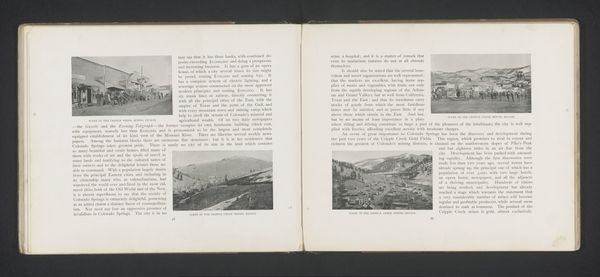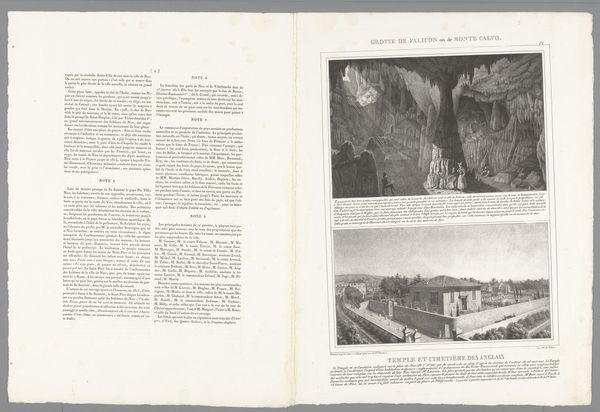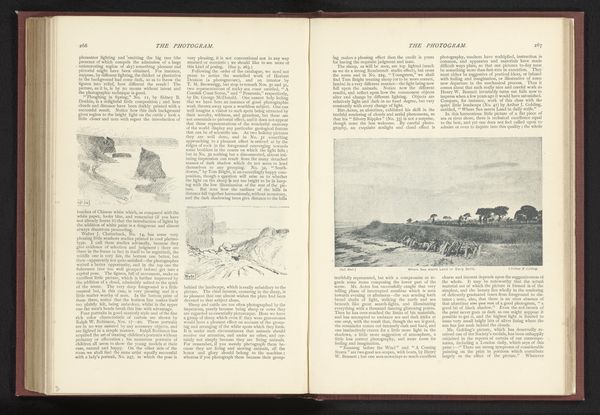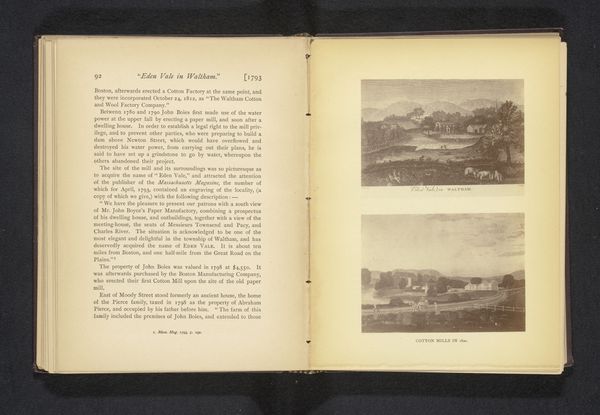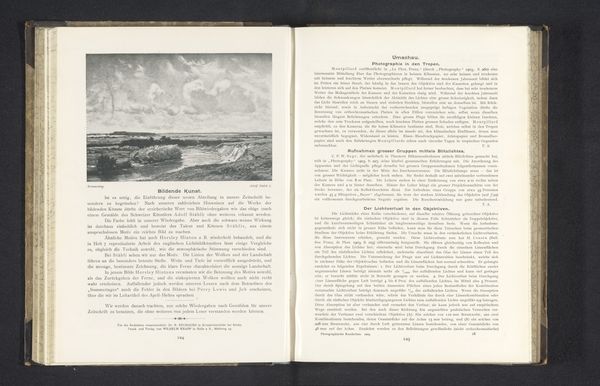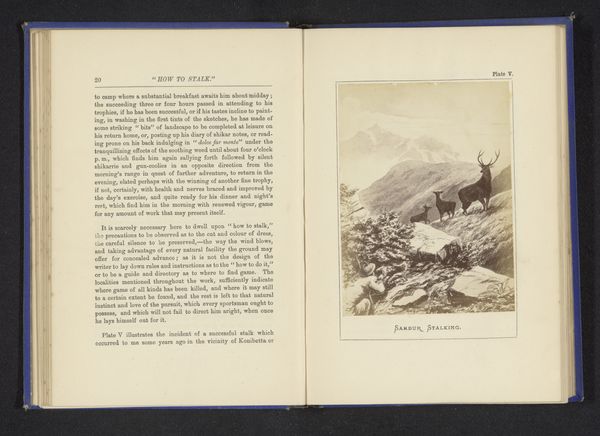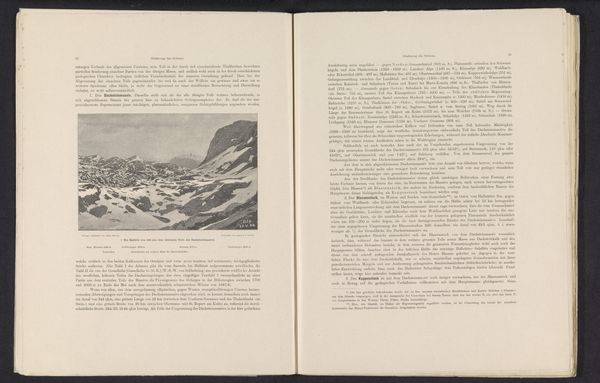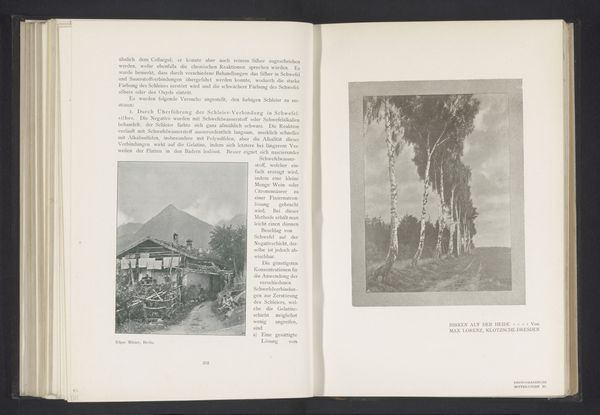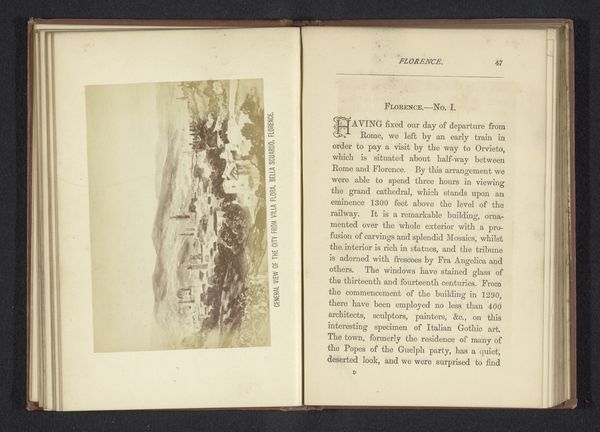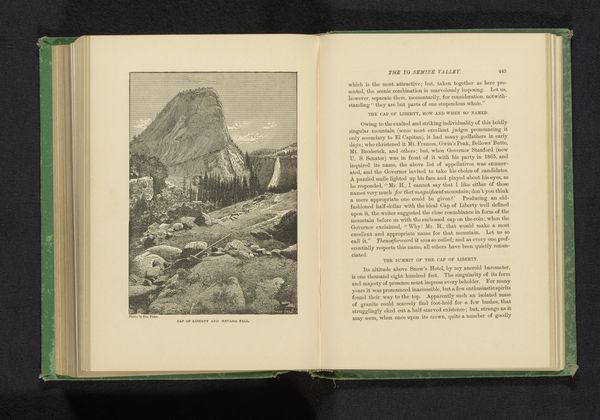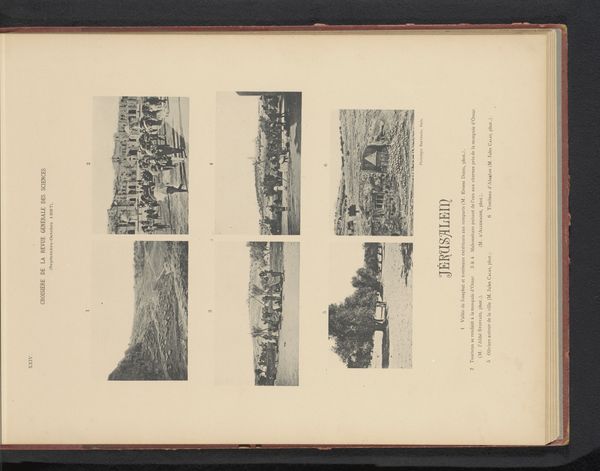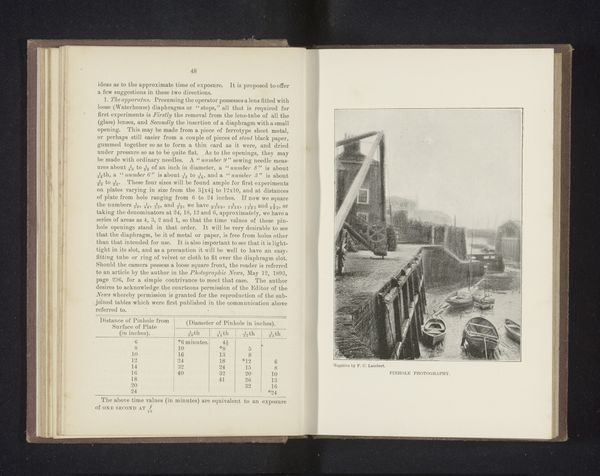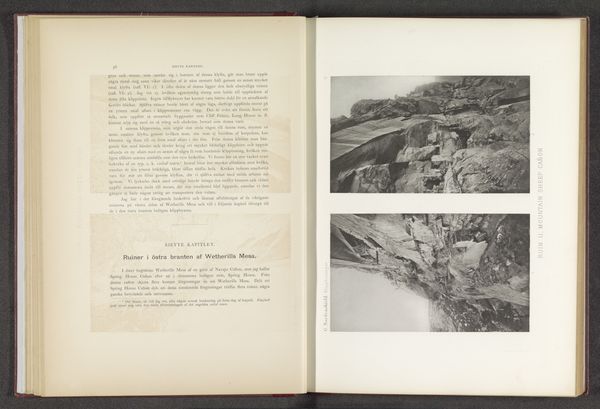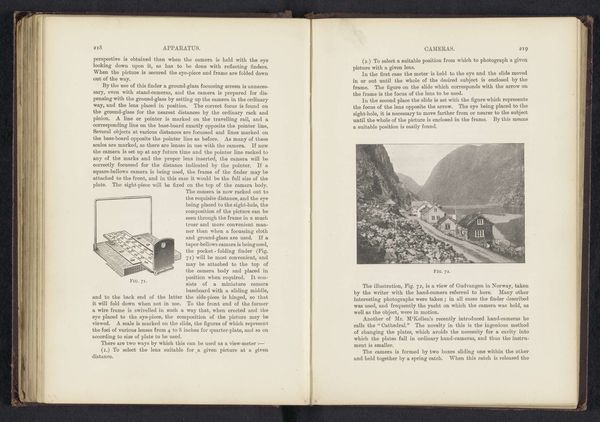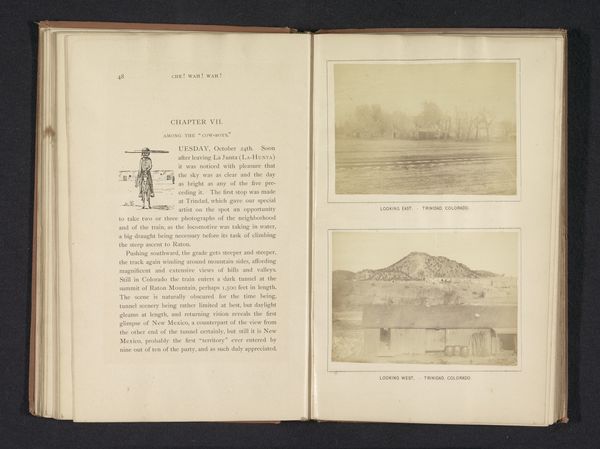
graphic-art, print, engraving
#
graphic-art
#
aged paper
#
medieval
#
page thumbnail
# print
#
old engraving style
#
hand drawn type
#
landscape
#
retro 'vintage design
#
personal sketchbook
#
journal
#
old-timey
#
genre-painting
#
history-painting
#
storyboard and sketchbook work
#
word imagery
#
engraving
Dimensions: height 410 mm, width 325 mm
Copyright: Rijks Museum: Open Domain
Curator: We're looking at a graphic print dating back to 1850, entitled "De provincie Drenthe. 83.000 inwoners" created by Jan Schuitemaker. The medium here is engraving. Editor: It feels very informative, like a page ripped from a historical geography textbook. There's an austere quality to the line work and the limited tonal range emphasizes the functionality of the piece. Curator: Schuitemaker offers more than just geographical data; it is published under the banner "Prenten-Magazijn Voor de Jeugd," which loosely translates to "Picture Magazine for the Youth" in English, and presents both education and moral narratives. The prints often combined geography with aspects of everyday life or historical moments in the Drenthe province, perhaps embedding lessons or warnings within these visual representations of regional identity. Editor: The layout seems to organize the information well, starting with a bird's-eye view map and proceeding towards images on the ground level. There are other prints of children, dwellings, and rock formations depicted that evoke distinct eras and landscapes within Drenthe. Each vignette offers its separate view on life there. Curator: Precisely, a "gesicht," a sight or spectacle for the youngsters, intended to familiarize them with aspects like the colony for children at Veenhuizen and rural living conditions, potentially molding perceptions and regional identities. The map at the upper left situates the population data but also the surrounding cultural sphere. The starkness emphasizes social or moral instruction in that way. Editor: From a compositional view, the print uses strong, contrasting blacks and whites to clarify form. You are able to discern detail within each mini-scene without visual overload due to each section being contained. In short, a good exercise of design thinking on displaying varied topics that can inform and educate the readers on that period. Curator: I see echoes of didactic aims blending education with implicit directives, mirroring the pedagogic methods then that merge topographical learning with an initiation into ethical community engagement. Editor: A fitting insight, focusing us on not just seeing but also comprehending the interwoven cultural threads within such a deceptively pragmatic-seeming layout.
Comments
No comments
Be the first to comment and join the conversation on the ultimate creative platform.
